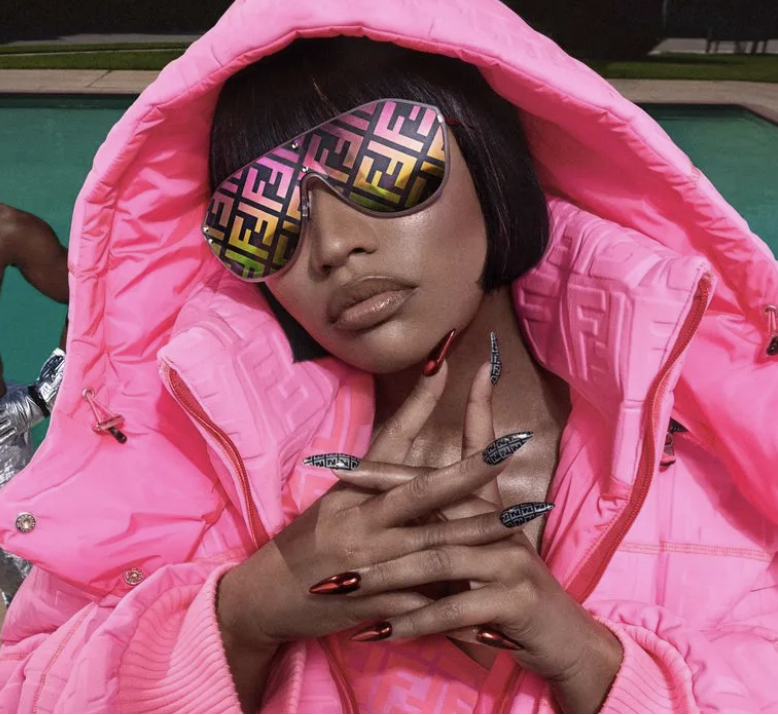Who Luxury Leaves Out
Graphic by Carly Witteman.
The Migos released their hit song “Versace” in 2013. I was only ten years old, but it was the first I ever heard of such a brand. And Migos didn’t shy away from name-dropping the brand as much as possible — totaling 163 times in one song. Nonetheless, ten-year-old me was left wanting Versace clothing despite having never heard of the brand before.
Migos adorned in Versace at the 2018 Met Gala. Image courtesy of @Versace on Twitter.
Years later, the tune of Lil Pump’s “Gucci Gang” rang through my mind in an eerily similar manner, with a catchy tune and iced-out imagery that drew in everyone around me. And who was I to turn away? Why did I get brands like Versace, Gucci and Fendi peddled to me on a silver platter, while other luxury fashion brands never even thought to throw an advertisement in my direction? I had learned of the aforementioned brands through songs and images, but other companies like Burberry, Prada, Coach and Givenchy had stayed hidden until relatively recently.
“Luxury” as a concept, by and large, is pretty straightforward — think opulence, richness, extravagance. However, this straightforward idea becomes less, or technically more, black and white when it comes to who luxury fashion brands are targeting.
In 2013, writer Jihan Forbes wrote an article for Fashionista about discrepancies in luxury fashion marketing. Nearly a decade later, it’s clear most of her sentiments about the fashion industry’s exclusion of minority groups have remained unchanged. Though Black dollars have been going toward luxury brands for years now, the luxury world has been dedicating less than 3% of its efforts toward securing an audience of color.
Luxury brands do not target people of color, nor do they want to. In fact, for luxury brands such as Gucci, Versace and Fendi, associating with the greater public is said to have a cheapening effect on the company’s image. A 2015 Forbes article describing this phenomenon asked: “When does luxury expand to a point where it’s no longer interesting?” The answer the author provided alluded to when markets become oversaturated with sameness, but I believe she was getting at something much deeper and fundamental to the luxury fashion industry: capitalism and white supremacy.
Luxury fashion, like the economy, does not see trickle-down effects. Primarily Black and brown creators have instead forced their way into these spaces to make “luxury” accessible to their audiences.
Nicki Minaj modeling in her campaign for FENDI ‘Fendi Prints On’.
Artists like Beyonce, Nicki Minaj and Rihanna have been making a conscious effort to market luxury fashion and brands to Black female audiences, who would usually be left on the periphery of these advertising campaigns. But while new marketing campaigns have been tailoring themselves to a more inclusive audience, in terms of sizing, age and race, I still find myself wondering if these brands would ever even picture me wearing their clothes, let alone modeling them on a runway or red carpet.
This is why I believe it is time for us to rethink what luxury truly means. Living an extravagant lifestyle can mean whatever you choose it to mean. For me, luxury is the freedom to choose which items you want to seek, whether that be the newest Telfar bag drop or a new YSL perfume. We need to stop letting luxury brands decide what is luxurious and instead take that power into our own hands.
To start, here is a list of Black, Latinx, Asian, and Indigenous fashion brands and designers to support.



